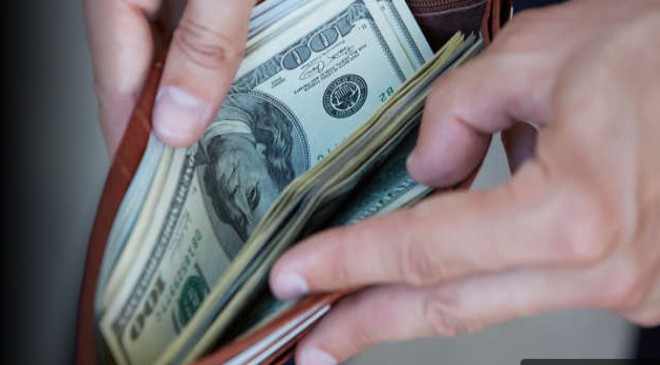Savings accounts are a basic way to keep your money safe, and pretty much everyone can benefit from having at least one. Savings accounts are a great place for your emergency fund and any money you might need for a big purchase or goal in the next couple of years.
Thanks to a series of Federal Reserve rate hikes, you can open a high-yield savings account right now that pays 5% APY on your money. That’s not too shabby, given that the average rate across all savings accounts is just 0.45%, according to the FDIC.
Read More:- Best CD Rates Today: The Clock Is Ticking on High Interest Rates
But how do you know how much money belongs in your savings account? There’s a way to find out. Here are a few questions to answer if you’re wondering whether your savings account is underfunded, overfunded, or just right.
How much do you need in your emergency fund?
First things first: Your emergency fund is a crucial part of your personal finance picture. It’s how you pay for unplanned expenses, and it could even get you through a crisis, like a medical emergency or losing your job.
Many experts recommend saving three to six months’ worth of regular expenses (such as your housing payment, car loan payment, utility bills, groceries, and insurance) for an emergency fund. Keeping this money in a high-yield savings account is a good way to ensure it’s accessible when you need it — and it’ll even grow with interest.
Also Read– Americans To Get Additional Social Security Payment in November
A money market account might also be a good place for your emergency fund since you’ll usually get one-step access to your cash via checks or a debit card (these are not features that most savings accounts come with). You can estimate your emergency fund needs by adding up your monthly bills yourself — or try an emergency fund calculator.
How much do you need for other near-term goals?
Are you saving for another purpose? To use myself as an example, I recently bought a home after 18 months of saving money toward the effort. I did some calculations initially to give myself a savings target, and I wound up saving about 40% more than my original goal.
Also Read- 3 Reasons Why Retirees Should Forget About CDs
This gave me the flexibility to buy a home that was move-in ready and still end up with a six-month emergency fund in the bank.
If you’re also saving to become a homeowner or pay for a wedding, new car, or vacation, take the time to figure out how much you need to reach your target. As a bonus, doing the math will help you figure out how much you need to save every month (or even every week, if you’re an overachiever like I am).
Breaking down a big goal into manageable chunks is my favorite trick for making the seemingly impossible happen.
Also Read– 5 Ways to Build Passive Income Through Investing
If you’re saving for multiple goals, I recommend choosing a savings account that offers sub-accounts (these might be called “buckets,” “pockets,” or “vaults,” depending on the bank) within your main one. You can name your sub-accounts and set individual savings goals, making it easier to track your progress along the way.
Are there better options for your money?
Finally, it’s a good idea to investigate other account options that might be a better fit for your needs. For example, if you have cash savings beyond what you need to pay for unplanned expenses and shorter-term goals (like a vacation or a big purchase), you might consider opening a brokerage account and investing that money.
Read More:- The changes SSA will make to Social Security in October
Investing is best done over the long term, as committing to leave your money in stocks for at least five years is how you can mitigate the short-term risk of loss. The stock market fluctuates, but over the last five decades, it’s returned an average of 10% annually.
If you put $5,000 into the market and earn that same 10% return, you can expect to have around $13,000 in 10 years, $33,000 in 20 years, and $87,000 in 30 years. Add more to the account and buy additional investments over time and you could grow quite a nice nest egg.
Also Read– Social Security cost-of-living benefits increase announcement coming Thursday
Remember, $250,000 is your savings account’s top limit
No matter what, you should keep your savings account balance under $250,000 (or $500,000 for joint accounts). Why $250,000? That’s the standard limit for FDIC insurance. The Federal Deposit Insurance Corporation insures American consumers’ bank deposits for up to that amount, per ownership category and per bank.
If your bank goes under, this means your insured money will be returned to you. You can find higher FDIC limits with some financial institutions, but it’s not likely that the average person will ever have to worry about needing more protection than this in a savings account.
Wondering if you’ve got too much cash in your savings account? Now you know the right questions to ask to determine that — and no matter what magic number you land on, be sure it’s less than $250,000.
Also Read- Social Security 2025: These States Will Get the Smallest COLA Pay Bumps Next Year
Alert: highest cash back card we’ve seen now has 0% intro APR into 2026
This credit card is not just good – it’s so exceptional that our experts use it personally. It features a 0% intro APR for 15 months, a cash back rate of up to 5%, and all somehow for no annual fee!









































